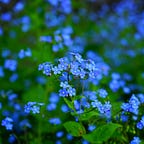Quantum Entanglement: The Dance of Our Universe
Imagine you are in a dance, spinning like a ballerina or a break dancer. Then, suddenly, as you come to a silent rest, your final position has determined the future of the whole world — and all of the entities of the worlds within the very universe itself.
This is what just happened — born from our imagination and our understanding of nature.
Your life is now completely different, even if you feel exactly the same.
In May 2024, researchers in the United States, China, and the Netherlands successfully generated quantum entanglement on their own and showed the world that we are getting closer to establishing a “quantum internet!”
This experiment is a major milestone; in the past, quantum entanglement has been shown in labs, but these research groups produced these entangled photons in a large-scale network setting, which is much more difficult to accomplish.
Before I get into the details of each research group, here are some important terms to understand that are related to the recent experiments:
- Qubit: the basic unit of quantum information — there are many different types of qubits, such as superconducting, trapped ions, and photonic qubits. In the context of recent discoveries, the lab from China used neutral atoms qubits, and the labs from the United States and the Netherlands used solid-state spin qubits.
- Entanglement: when two or more objects are linked so that the quantum state of each particle of the group cannot be described independently of the state of the others, even if they are far apart. Quantum entanglement can be generated in many ways, and I will explain the methods of the research groups later in this article.
- Photon: a tiny particle that is the fundamental unit (smallest particle) of electromagnetic radiation. Photons have no mass and no charge, but have momentum and can travel at the speed of light! In quantum computing, they are used to encode, carry, and manipulate quantum information.
- Quantum internet: a network that could allow information to be exchanged while encoded in quantum states
- Optical fiber: a material that transmits signals or photons from one end to the other in the form of light. Optical fibers are typically flexible glass or plastic fibers, and allow for transmission over longer distances than electrical cables.
Now that we reviewed the key terms related to quantum entanglement and the hardware aspect of quantum computing, we can understand what each group did. Each of the three groups stored the quantum information in different ways, but all connected parts of a network using photons in the infrared part of the spectrum.
Infrared light is a section of the electromagnetic spectrum with waves slower than those of the visible light we see. There are many reasons why optical fibers are most efficient at transmitting infrared light (both the fibers and the photons play a role), but in summary, data can be transmitted over longer distances with minimal signal degradation.
At the University of Science and Technology of China (USTC) in Hefei, China, Pan Jian-Wei and his team used a photon to set the quantum states encoded by rubidium atoms — their qubits. To put the nodes in an entangled state, the emitted photons, which carry the quantum information, would have to arrive at their photonic server (which was 10 kilometers away) at the same time. To do this, Pan’s team “tickled” the atomic clouds to emit photons. This means they applied an external field or pulse to control when and how photons are emitted from the excited rubidium atoms.
At the Delft University of Technology in the Netherlands, Ronald Hanson and his research group used qubits that are diamonds with “Nitrogen-Vacancy” (NV) centers. These have a nitrogen atom replacing a carbon atom at one location that is also next to a vacant carbon atom. This allows researchers to use infrared light to manipulate the electron spin states of nitrogen, as well as the nuclear states of neighboring carbon atoms.
Like Pan’s team, Hanson’s team used a central photonic server to receive the photon signals, and if they arrived at the same exact time, the quantum states of the original qubits could interact in a way that results in entanglement.
Finally, at Harvard University in the United States, Mikhail Lukin and his team used a diamond with a “Silicon-Vacancy” (SiV) center. This is just like the diamond with the NV center, but it has a missing carbon pair (two missing carbons, not one).
Lukin’s team first sent one photon with an initial quantum state to the silicon atom, which entangled the photon with the first qubit’s information. When the photon reached the second silicon atom, which was 35 kilometers away from the first, the photon then entangled itself with the second qubit. Now, entanglement has been achieved between two qubits using a single photon!
All the labs created quantum entanglement in different ways, but their overall concept is very similar. To recap, the qubits have quantum states that carry quantum information. Then, photons facilitate transferring the information and are the entities that can lead to creating entanglement between the two states. During this process, optical fibers provide an efficient path for the photons to travel in and store information for longer periods.
These developments have many diverse and critical applications. By demonstrating entanglement over large distances, we can not only effectively protect sensitive information, but also potentially connect separate quantum computers into one larger and more powerful machine, and create networks of high-resolution optical telescopes!
So as you spin and spin some more, like pieces of clay spinning on a ceramic wheel, you are sculpting the cup and the bowl that will contain, preserve, and spread the elixir of life itself.
A quantum entangled cosmic dance.
Check out Vidur’s article on the types of qubits and their advantages and disadvantages! https://medium.com/@vidur.jannapureddy/unveiling-the-quantum-future-a-deep-dive-into-the-world-of-qubits-db165f53c85c
Below are also some sources I used:
https://www.energy.gov/science/articles/creating-heart-quantum-computer-developing-qubits
https://www.nature.com/articles/d41586-024-01445-2
https://www.quera.com/neutral-atom-platform
https://www.forbes.com/sites/chadorzel/2017/02/28/how-do-you-create-quantum-entanglement/
